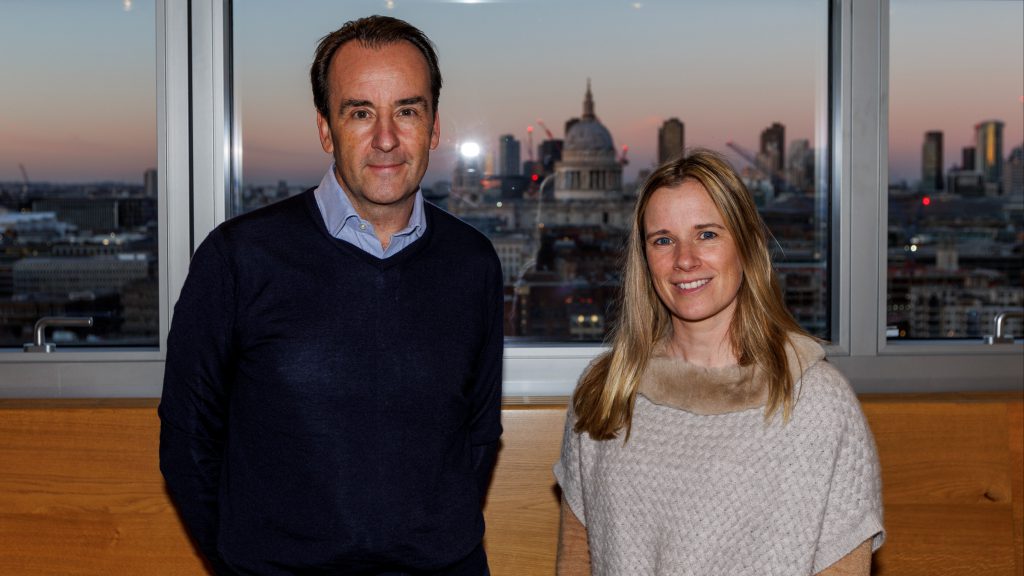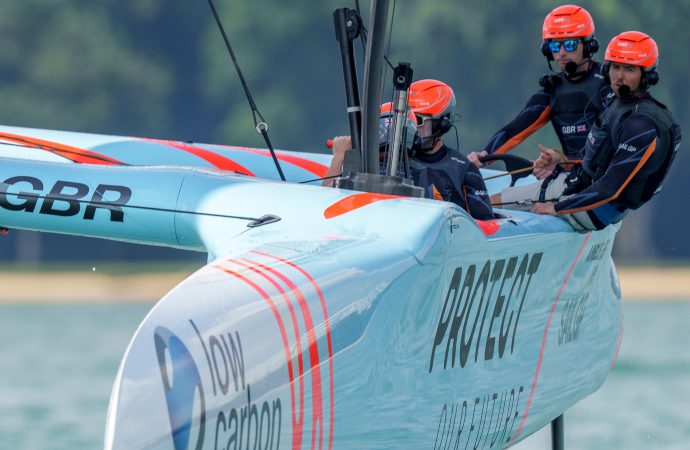SailGP GBR sailor Hannah Mills OBE recalls Sir David Attenborough’s quote, ‘Saving our planet is now a communications challenge’, but to who, how and where should sport avail its platform with sustainable messaging? SailGP GBR’s partnership with Low Carbon shows that the answer has several dimensions
On 23 January 2023, the Great Britain SailGP Team announced its three-year partnership with global renewable energy company Low Carbon. Founded by Roy Bedlow in 2011, Low Carbon aims to reach net zero emissions by 2030, primarily via generating 20 gigawatts of renewable energy. This is enough to power seven million homes, or roughly every home in every host city on the SailGP calendar.
Hannah Mills OBE and SailGP GBR sailor tells The Sustainability Report that “as a sports team, we’re uber competitive and we set pretty ambitious goals. Low Carbon has the same mindset. It’s exciting to bring on a partner where you fully buy into what they’re trying to do and they buy into what you’re trying to do.”
Reflecting on Sir David Attenborough’s assertion that “saving the planet is now a communications challenge”, Mills and Bedlow explain how the partnership hits a number of touchstones when it comes to communicating sustainability through sport.
Communication as commercial strategy
SailGP GBR chief executive and driver Sir Ben Ainslie partnered with Low Carbon from 2014-2017 for the 35th America’s Cup, setting a precedent to rekindle the partnership now. Even more decisive, however, was SailGP GBR’s explicit communication that its commercial strategy revolved around purpose and impact. This aligned the team with sustainable companies like Low Carbon, as well as SailGP’s purpose to ‘be the world’s most sustainable and purpose-driven global sports and entertainment platform’, and the Impact League being a ‘world-first initiative that sees teams compete for a second Championship, making sustainability essential to the fabric of sport’.
Communication as education
The mechanism that unites the team’s actions with purpose and impact is Protect Our Future, a climate education platform launched in March 2022 by SailGP GBR and the team’s charity partner, 1851 Trust.
Established by Ainslie and Sir Keith Mills in 2014, the charity uses STEM subjects (science, technology, engineering and maths) to inspire the next generation to become innovators and protectors of the oceans.
Research carried out by 1851 found that “7 out of 10 teachers didn’t feel that they had the resources and the knowledge to teach climate change and over half of young people felt powerless to act against climate change”, Hannah Mills explains. “The commercial strategy of the team is very much around education. It definitely took some time to build the momentum around that, getting our messaging right and to understand exactly who we were as a team and what we were trying to achieve. We want to create resources that are really engaging compared to anything else out there”.
Low Carbon will help to produce and scale these resources into what Bedlow (below left, alongside Hannah Mills), who is already a trustee of 1851, terms “building global communities of climate champions”. 1851 aims to educate three million children via this global campaign, building upon the one million target when Protect Our Future was launched.

This educational aspect of SailGP GBR and Low Carbon’s partnership will also include building coalitions for climate action and innovation in cities on the SailGP tour. Expanding upon school activations, such as schoolchildren in Plymouth participating in seagrass planting alongside the Great Britain SGP in July 2022, 1851 recognise that sustainability students don’t just have to be schoolchildren: “We hold evening sessions where we invite local government members and businesspeople where we talk about what we’re doing”, describes Mills. “We’re not doing schemes like this at every venue yet, but hopefully going forward”.
Communication as knowledge exchange
Mills and Ainslie will both be taking on advisory roles to the Low Carbon board and management team, sharing their expertise and opinions in quarterly meetings. Bedlow explains that “we’re looking for advice from Ben and Hannah on how we join the dots with regards to our messaging around climate change, connecting that with 1851 and both of them being sports professionals who can deliver the message.”
Bedlow describes improving the carbon footprint data collection process as the “hardest thing” to reduce Scope 3 emissions, but while SailGP GBR can provide Low Carbon with more data to accelerate their journey to net zero, Low Carbon will help SailGP GBR compete off the water in return: “I can’t make the boat go faster, but we can try and help make an impact on the Impact League”, Bedlow laughs. GBR currently lie 4th of 9 in the Impact League, meaning there’s progress to find to send the $100,000 winners’ prize to Protect Our Future.
While a ‘side-league’ like this evidently isn’t a priority for most sports, SailGP’s approach to arrange off the water pursuits into a competition clearly resonates: “I watched the Singapore GP with my two children who are 12 and 10,” Bedlow describes. “Their first question to me after the race was ‘where is the team on the Impact League?’ It wasn’t as much on screen as we wanted it to be, so we had to go to the website and look it up. Then my children started giving me a hard time! It’s still early days for us, but everybody loves a competition.”
Communication as sharing innovation
SailGP teams develop their own Impact League initiatives, but one of the immediate developments from SailGP GBR and Low Carbon’s partnership could have both industry and sport-wide implications. Low Carbon will supply a portable solar and battery installation to power SailGP GBR’s team base that will be piloted in San Francisco for the season finale in May.
To move between locations on the SailGP calendar, the 50-foot catamarans are broken down and packed into shipping containers, but the portable solar and battery is also being developed to be packable into a shipping container.
If this innovation is successful, it won’t be exclusive to SailGP GBR. Low Carbon could develop the technology for SailGP GBR and send them soaring up the Impact League, but while the league principally exists for teams to compete against each other, this competitiveness drives innovation and consequently increases the likelihood of developing transformative technologies. In a sport where race data is shared with competitors, why not share these technologies when it comes to something as urgent as climate change?
“If it [the portable solar and battery] is successful, then what’s really exciting is we can then bring that to all the other teams in the league as well”, Mills says, “so hopefully everyone is running off grid no matter where we are in the world and then actually, what other sports can we bring the package to as well?”
Opt into our weekly newsletter for exclusive content focused on sustainability strategy, communication and leadership for sport’s ecosystem.










Leave a Comment
Your email address will not be published. Required fields are marked with *